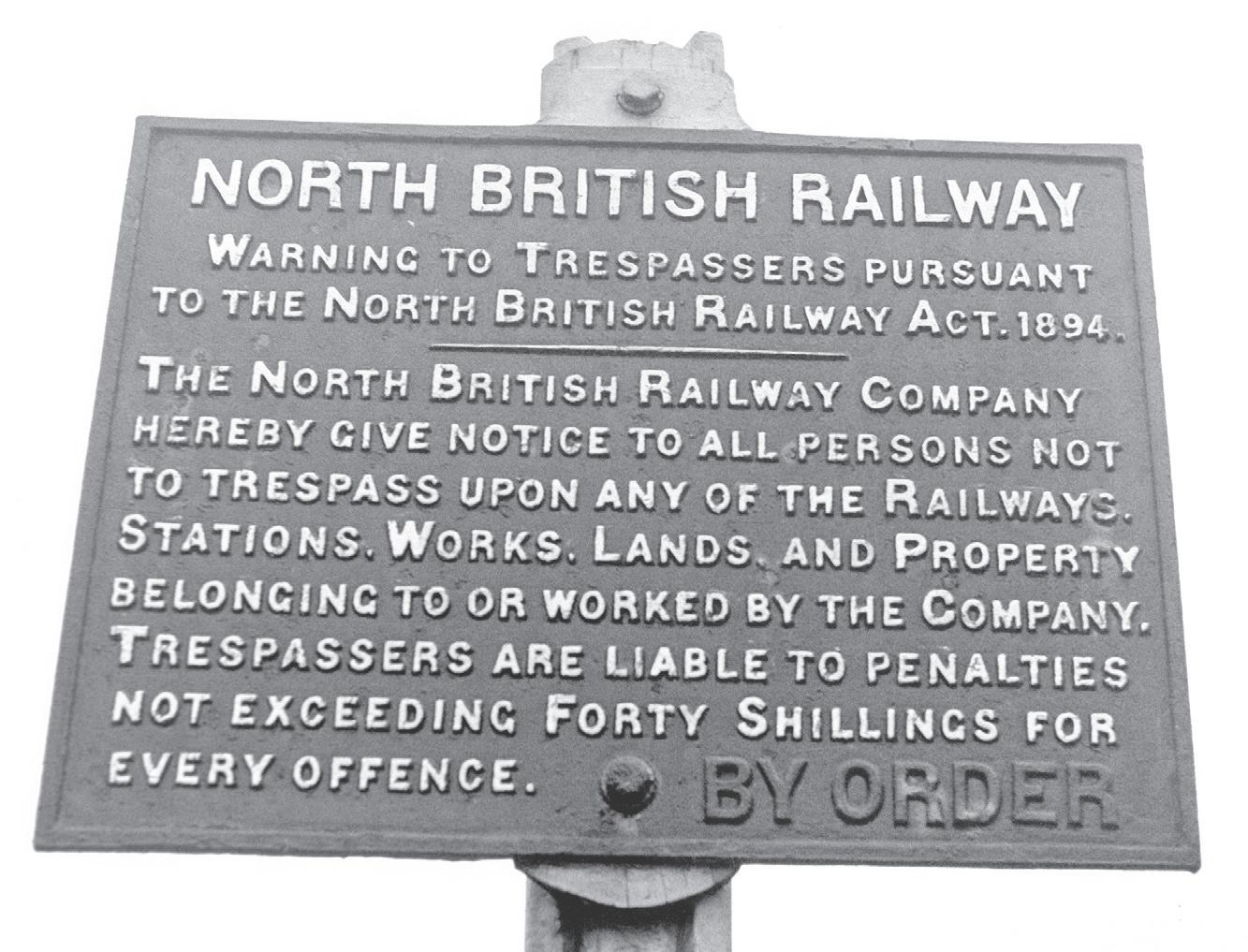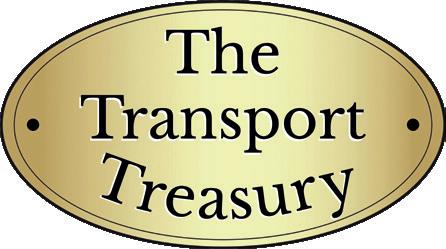

WAVERLEY
Carlisle - Hawick - Galashiels - Edinburgh

Images from the Transport Treasury archive
Compiled by Jeffery Grayer
Carlisle Citadel – Lyneside – Longtown - Riddings Junction – Penton –Kershopefoot – Newcastleton - Steele Road - Riccarton Junction
Whitrope – Shankend – Stobs – Hawick – Hassendean – Belses –St. Boswells - Melrose – Galashiels Stow - Edinburgh
Stow – Fountainhall – Heriot – Falahill – Tynehead – Gorebridge –Newtongrange – Hardengreen Junction - Eskbank & Dalkeith – Millerhill –Portobello – Edinburgh Waverley


Carlisle - Hawick - Galashiels - Edinburgh
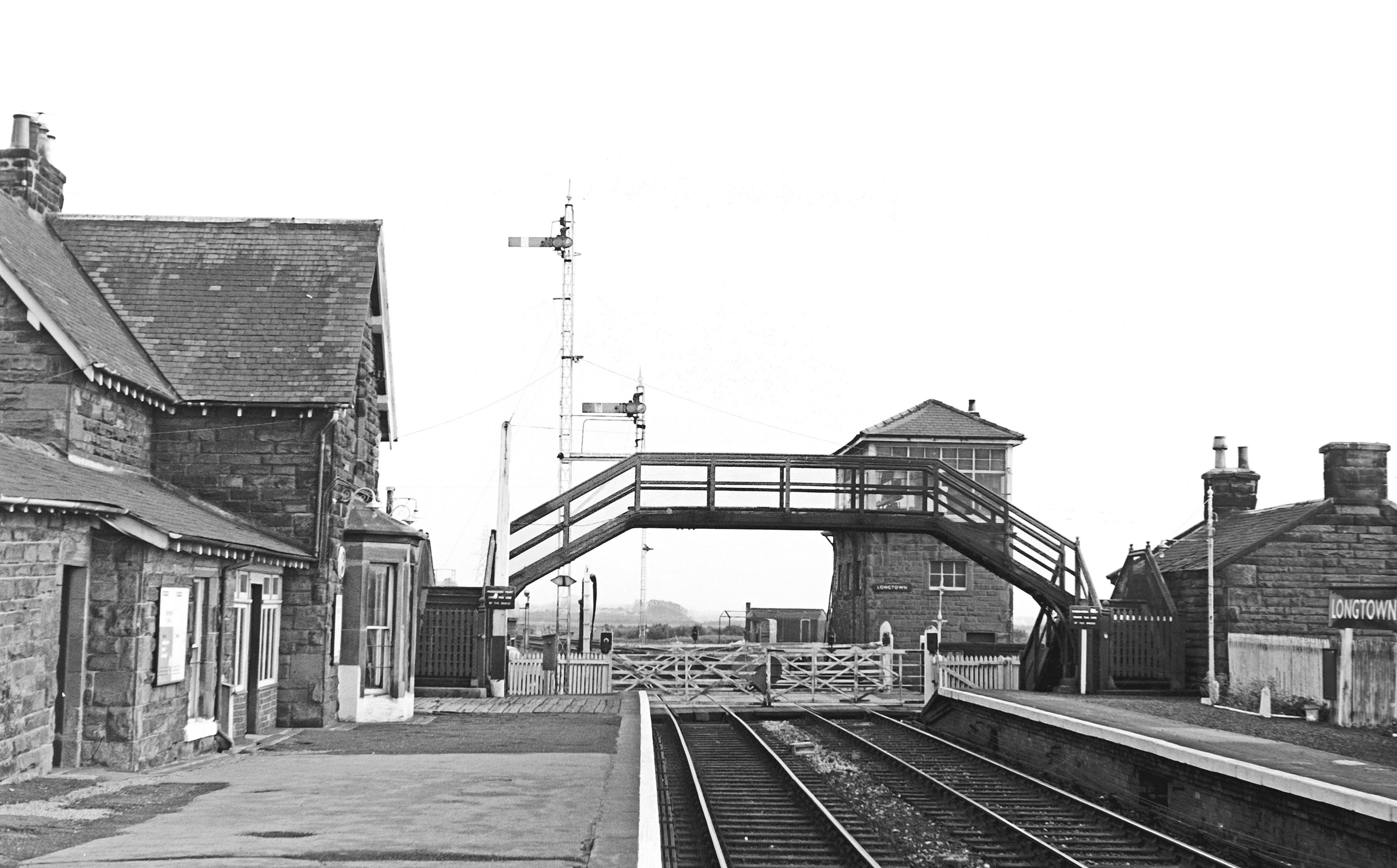
Above. This view of Longtown looking south shows the signalbox which controlled not only the level crossing but also the junction of the former route to Gretna which branched off to the right immediately after the crossing and which closed to passengers in 1915. After leaving the station the mainline to Carlisle crossed the River Esk on a substantial viaduct which, together with the station, level crossing and junction have all subsequently been demolished. (Henry Priestley)
Top right. A southbound freight headed by Class B1 No. 61099 crosses a northbound passenger working on 6 April 1963. Longtown benefitted from the passage of Langholm – Carlisle trains which, in 1963 for example, had the effect of raising the number of services to Carlisle from just four provided by Waverley route trains to ten on weekdays. The subsequent withdrawal of Langholm branch services the following year meant that rail travel from Longtown into the city became considerably less attractive and by 1965/66 there were no trains between the hours of 9.49am and 5.29pm. (W. A. C. Smith)
Bottom right. A member of station staff makes his way down the up platform possibly to chastise the photographer who appears to have wandered off the end of the down platform and taken up a stance on the level crossing in order to take his shot on this unrecorded date. However, this view does show the rather ornate water tank mounted on the up platform and in the distance can be seen the goods shed served by sidings on both sides of the line here, additional sidings having been laid during WW2. At one time there was even a small two road locomotive shed located at Longtown but this had closed back in the 1920s. (Neville Stead Collection)
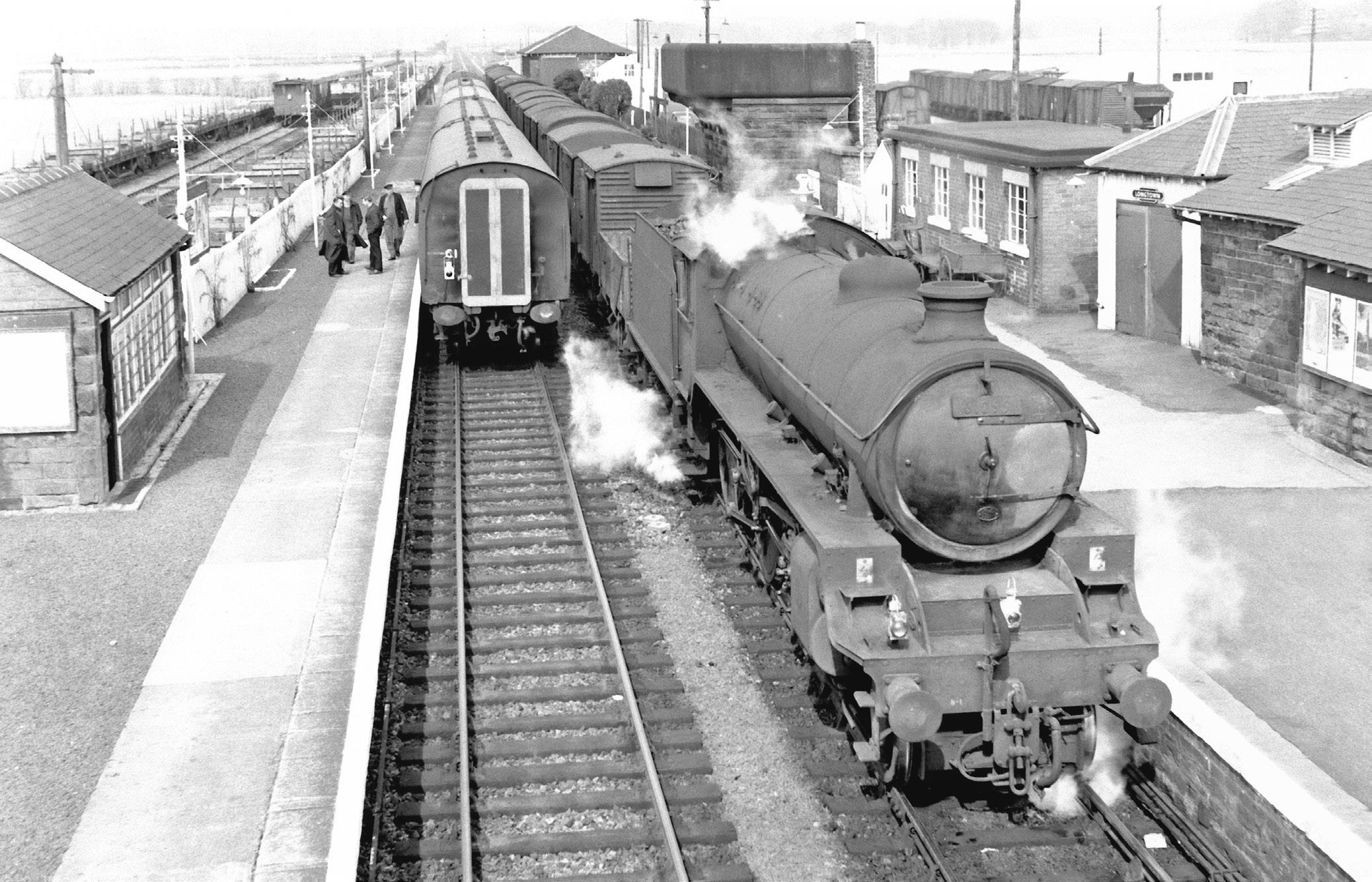
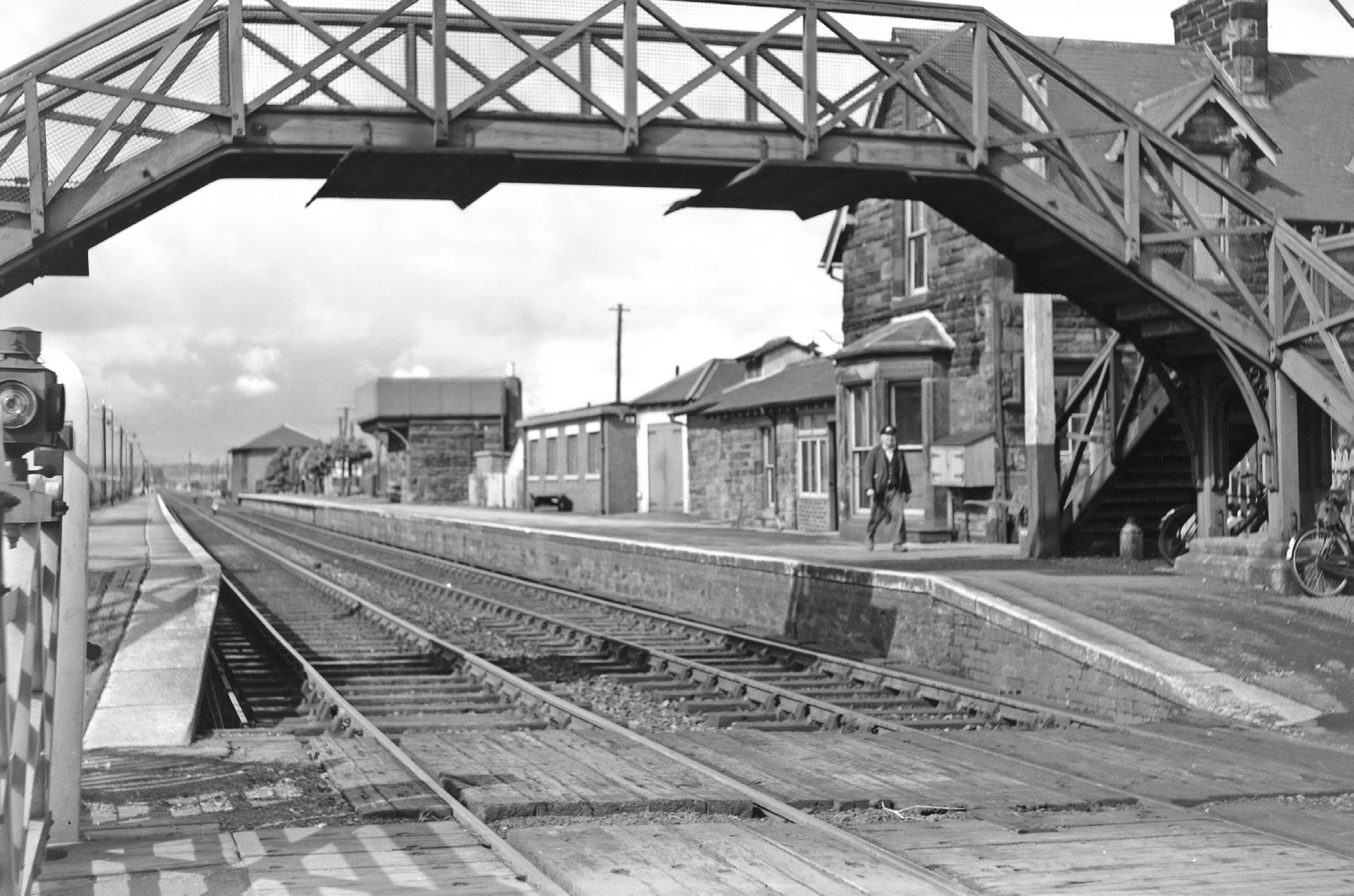
Carlisle - Hawick - Galashiels - Edinburgh
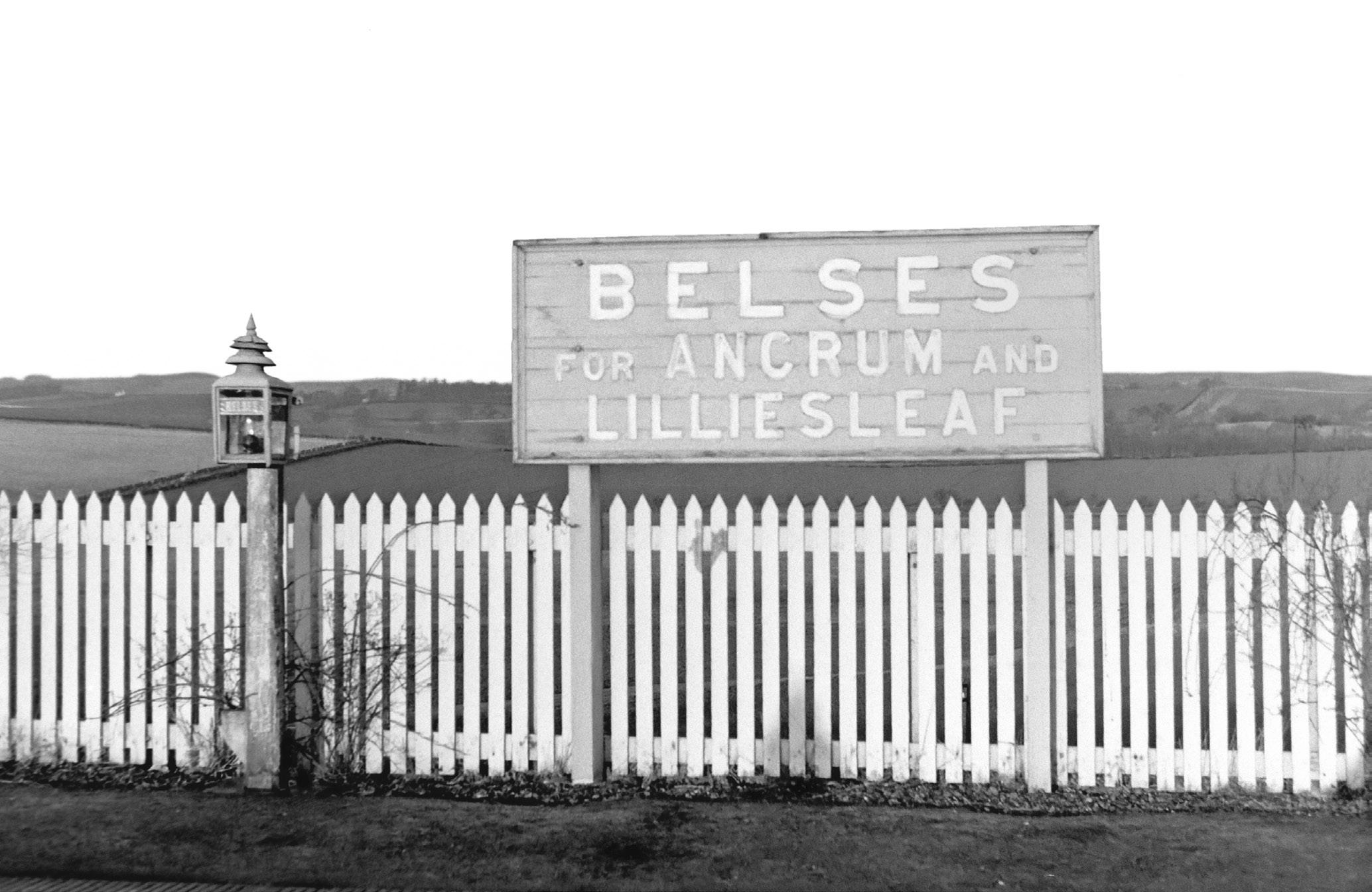
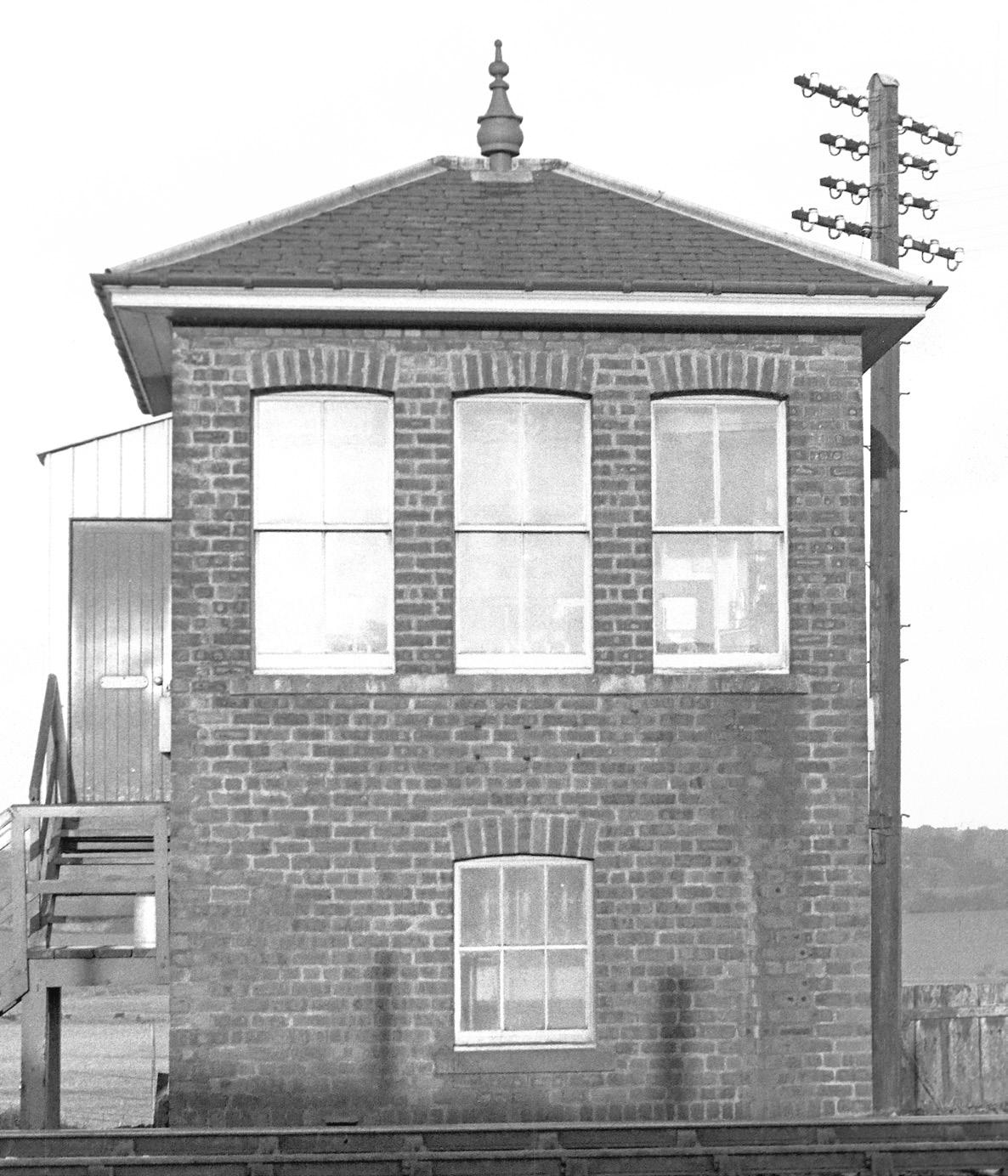
Above. As Belses itself consisted of just a couple of farms and a few cottages the large running in board drew attention to the fact that this was the station for Ancrum and Lilliesleaf. What it failed to mention however was the fact that neither place was what you might call significant and that Ancrum, current population 300, was 2½ miles away and Lilliesleaf, of a similar size, was even further at some 3½ miles, the latter village being equidistant from the alternative station at Hassendean. (Norris Forrest)
Left. In common with many boxes in Scotland the signalbox name was not on the front of the box but mounted on the side wall. As can be seen the box, like many on the line, was constructed entirely of brick with no wooden superstructure – no doubt a reflection of the inclemency of the prevailing weather conditions. Opening in 1882 it closed at the end of July 1966. Of note is the attractive finial on the roof. (Norris Forrest)
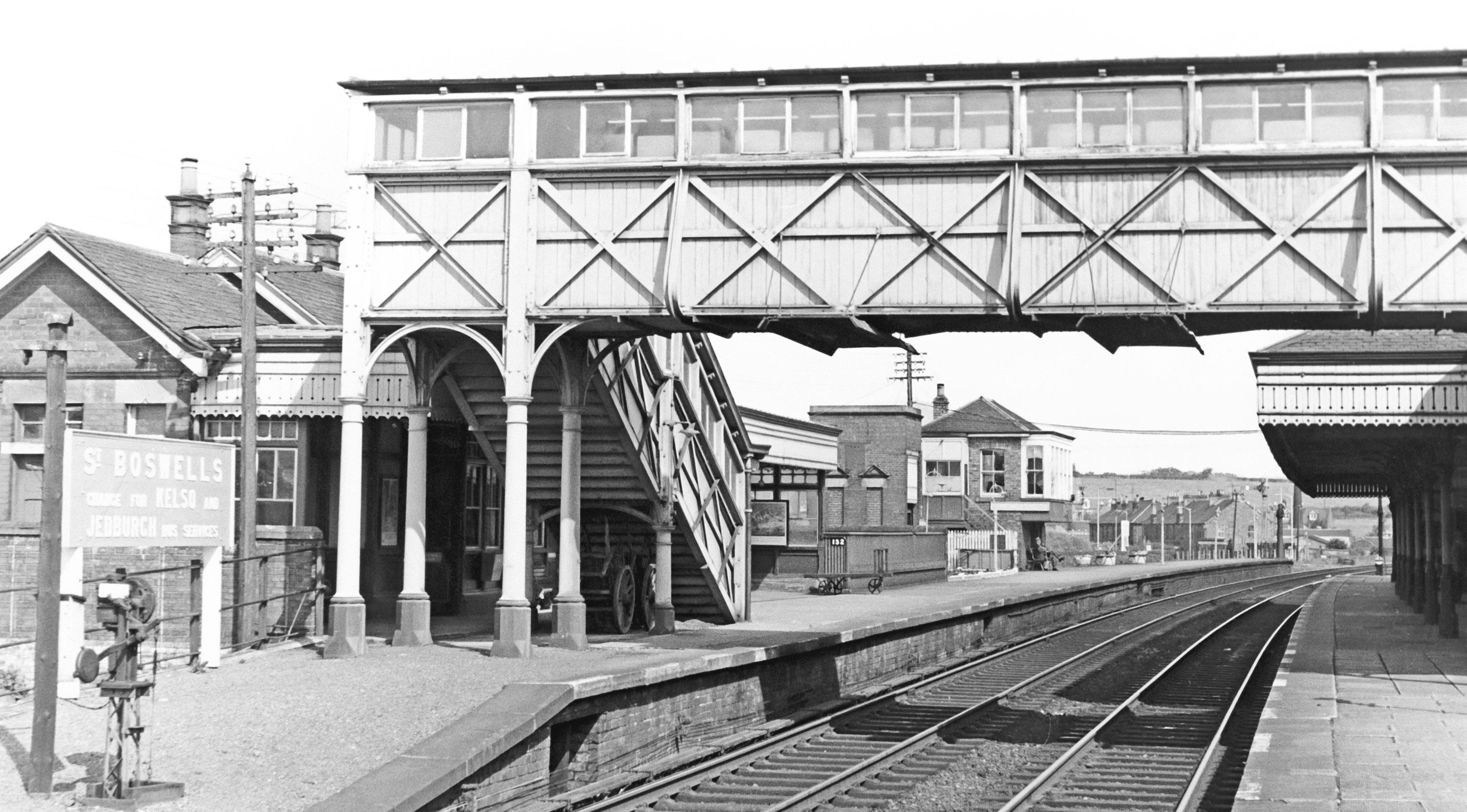
In this northward view of St. Boswells the substantial covered footbridge is evident whilst the running in board indicates that this was once the junction for trains to Kelso and Jedburgh, the latter destination now replaced by a bus service. The branch to Kelso, Tweedmouth and Berwick- upon-Tweed was to close in 1964 whilst that to Jedburgh had been closed due to flood damage back in 1948. At one time one could also change here for Duns and for Reston situated on the ECML but this route had closed as far as Duns due to damage caused by the severe floods of August 1948 (details of this event can be found in issue 1 of the Transport Treasury publication ‘Railway Times’). St. Boswells was also the railhead for visitors to nearby Dryburgh Abbey, last resting place of three famous Scotsmen – Sir Walter Scott, Earl Haig and the novelist John Buchan. (Henry Priestley)
On 12 June 1952 St. Margaret’s allocated No. Class K3/2 No. 61857, one of the class fitted with a Great Northern tender, rattles through St. Boswells with an up goods service passing the shed yard on the right where an unidentified Class J39 is simmering quietly. This 0-6-0 had probably worked in on the previous night’s goods service from Carlisle and it would then handle a freight turn to Kelso and Jedburgh before returning to Carlisle with a mid evening goods working. (W. A. C. Smith)
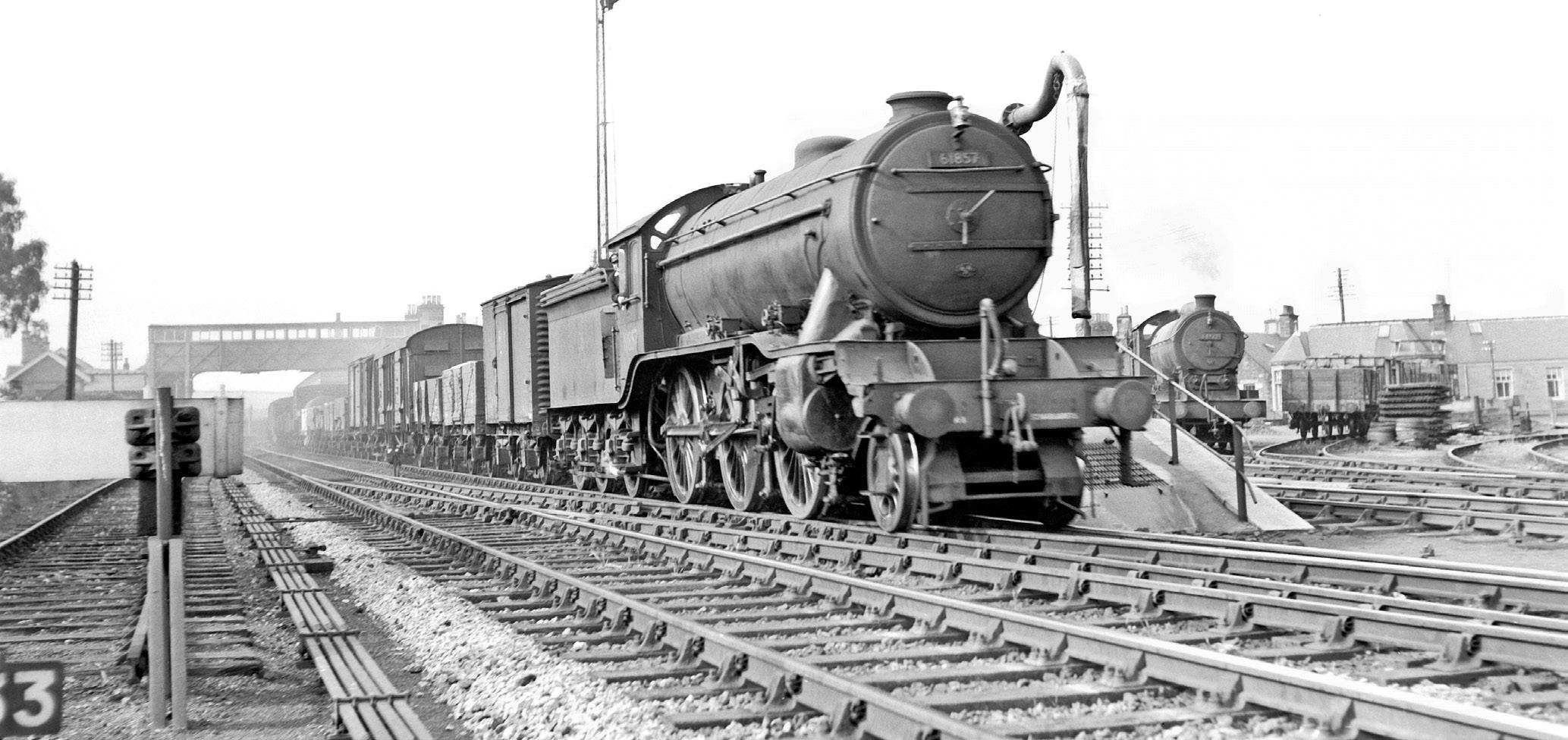
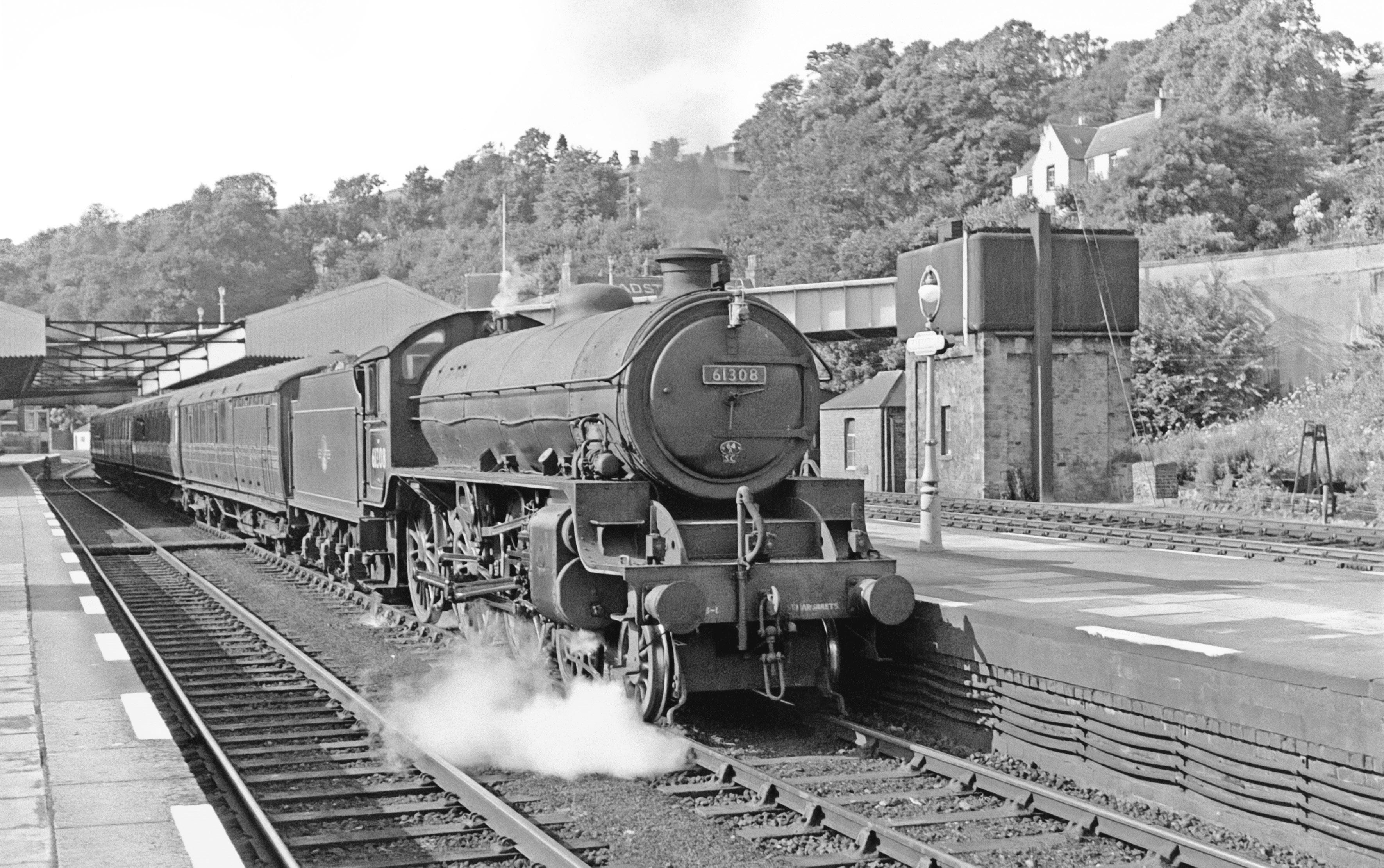
Above. Another B1 in the shape of No. 61308 arrives at the up platform in more clement weather with a service from Edinburgh. This Thompson 4-6-0 had spent three spells at St. Margaret’s depot during the late 1950s and early 1960s and the class were often to be found on locals between the Scottish capital and Galashiels sometimes operating via the Peebles loop. There was a good service between these two points with, in 1961 for example, some 20 departures from Edinburgh daily to Galashiels half of which operated via Peebles using DMUs. (Neville Stead Collection)
Top right. There was a small two road locoshed at Galashiels situated to the south of the station and in this image taken on 23rd. May 1961 Class J37 No. 64599, allocated to St. Margaret’s depot in Edinburgh, is seen on shed. Whilst the depot here, which was a sub shed of 64A, would close in April 1962 it was subsequently used for locomotive storage purposes with its most prestigious occupants being Class A4 No. 60026 Miles Beevor and No. 60034 Lord Faringdon which shared the facilities here with 350hp diesel shunters. ‘The Railway Observer’ reported that both Pacifics were in store until late December 1963 but that on 27 December No. 60034 was hauled to Hawick shed by Standard No. 78049. The following day this A4 departed tender first light engine under its own steam to St. Margaret’s shed but it was ultimately destined for store at Bathgate. By February 1964 the remaining Pacific No. 60026 had also moved to Bathgate from where it was recalled to active duty at Aberdeen’s Ferryhill shed in April working the 3 hr. expresses to Glasgow until withdrawal at the end of 1965. The J37 seen here would end its days at Dunfermline Upper MPD in October 1965. (A. E. Bennett)
Bottom right. Talking of A4s, we conclude our coverage of Galashiels with a couple of shots of these Pacifics on railtour duty. The ‘Scottish Rambler No. 4’ tour of 18 April 1965 had No. 60031 Golden Plover at its head carrying reporting number 1X50. Departing Glasgow Queen Street High Level the tour proceeded to Edinburgh and Polmont. It then traversed the Waverley route to Longtown whence it took the former Gretna branch to Mossband and Kingmoor reaching Carlisle from where it returned to Glasgow via Carstairs. It was booked for an hour’s layover at Galashiels and it was during this time that the photographer obtained his shot. (W. A. C. Smith)


Carlisle - Hawick - Galashiels - Edinburgh
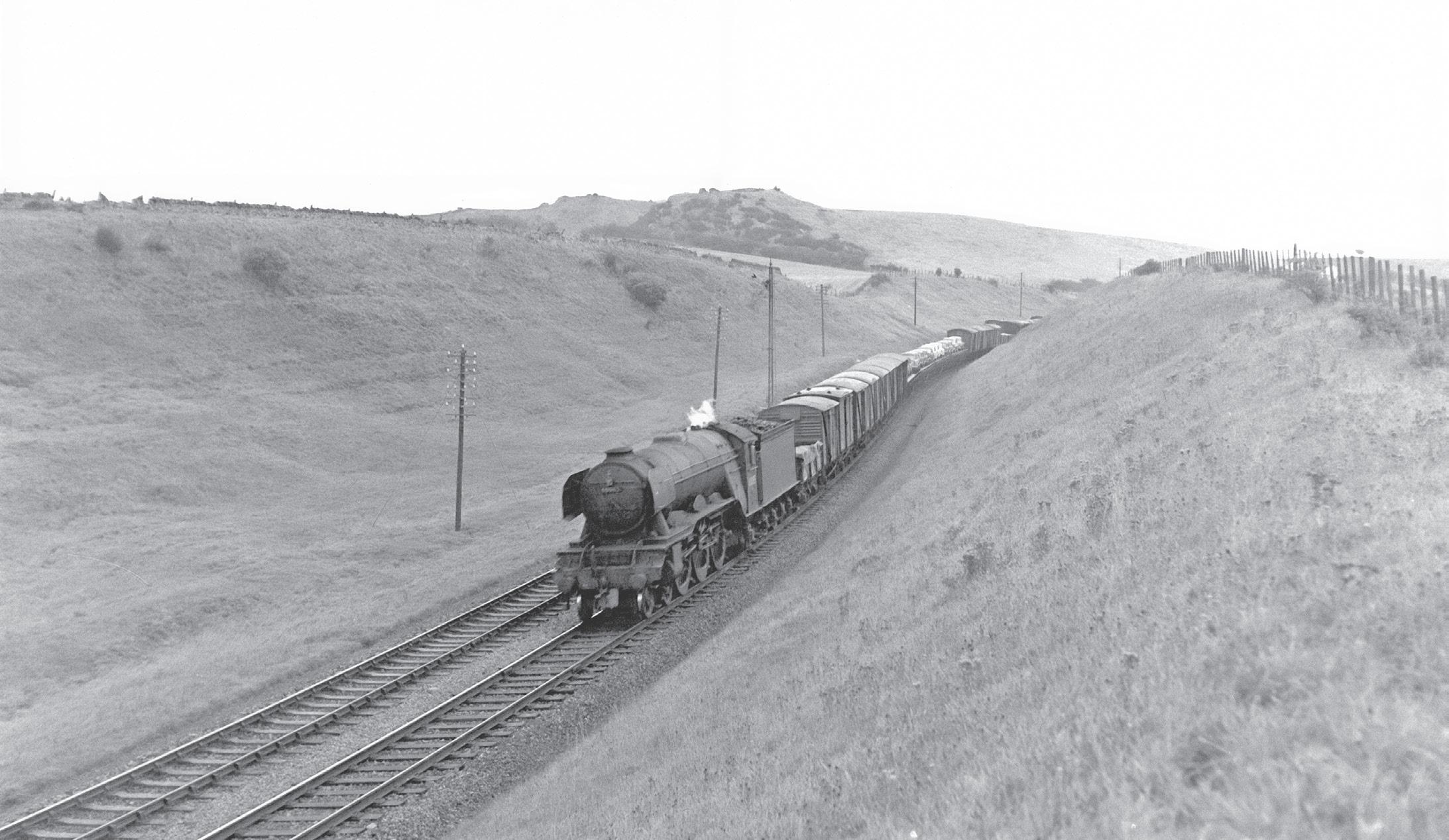
Serving only a limited intermediate population scattered amongst a handful of towns in the Scottish Borders the Waverley route was always a difficult line to work and was never a great money spinner. However, the short sighted closure of the route in 1969 left a vast swath of country isolated with two of the larger towns having the dubious distinction of being further from the national rail network than any other settlement of comparable size in the UK. With the opening of the Borders Railway in 2015 part of this isolation has been rectified and there are hopes that further extensions will follow leading ultimately perhaps to the reinstatement of the whole 98 mile route. In this volume we feature images of the line in the 1950s and 1960s before the axe fell.
